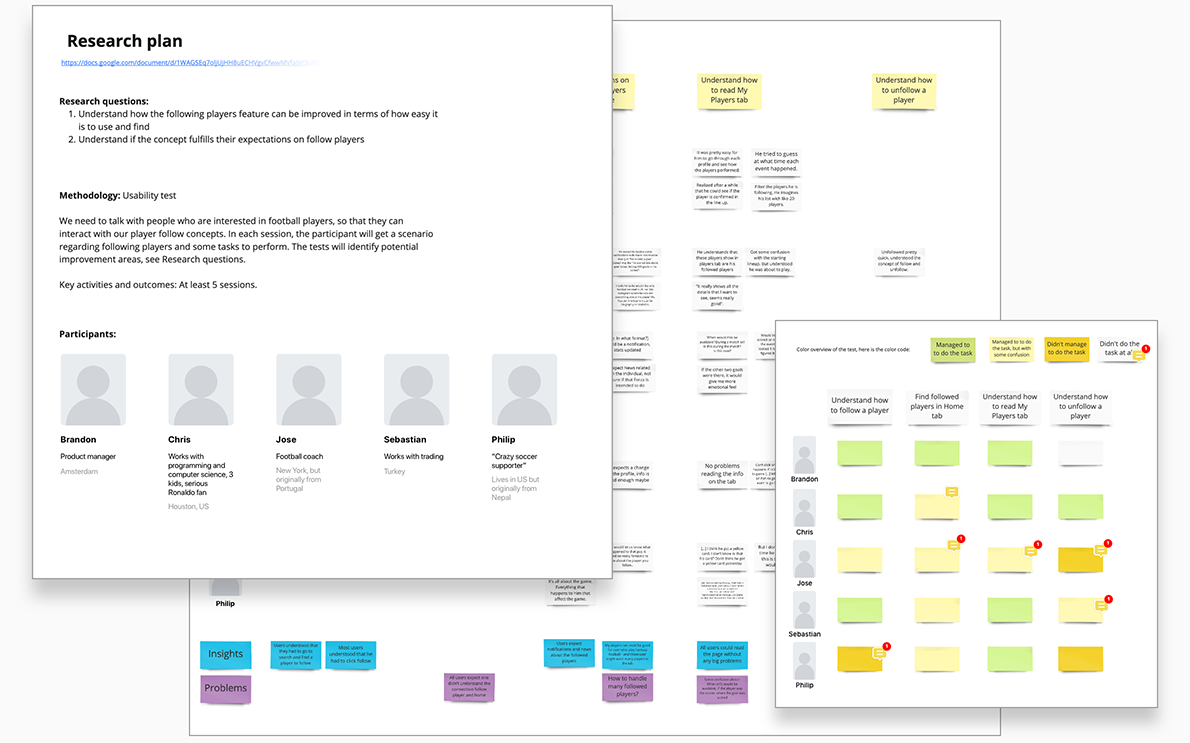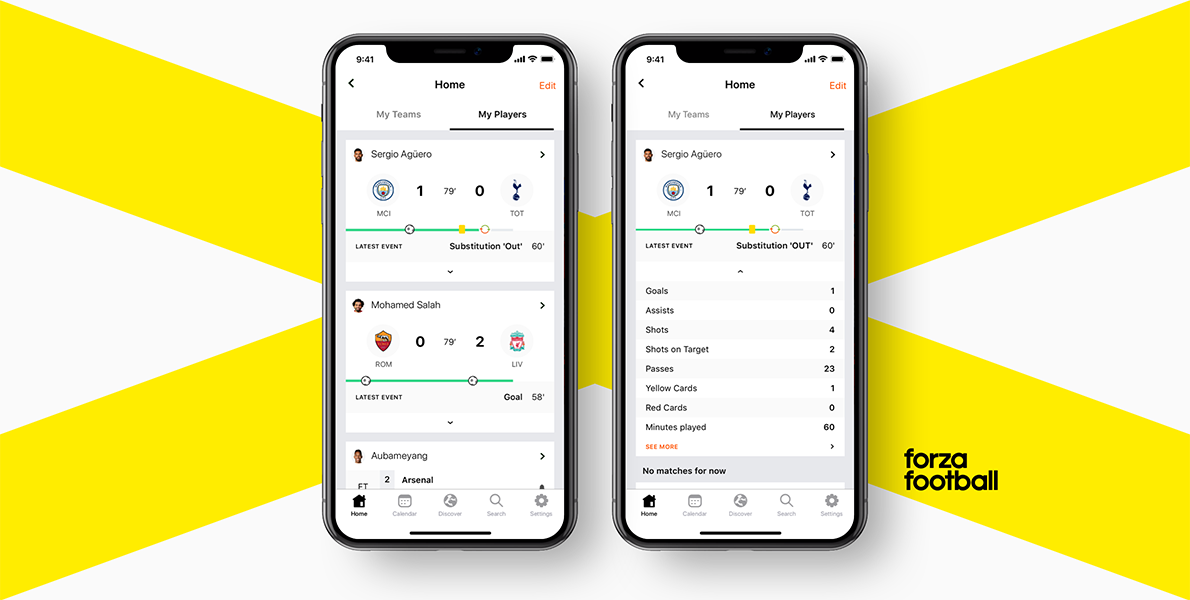Following Players
The way people follow football is changing. For entities in the football market such as livescore Apps, allowing users to follow players as they follow teams is now a necessary move. We aimed to take the forefront in this field.
Through this project, we investigated the effects of this transformation and uncovered opportunities to make the most of this change in a creative and innovative way.
Research
In some surveys, particularly within women's football, we observed a trend of supporters forming stronger connections with individual players rather than with teams. In men's football, this phenomenon is becoming increasingly evident, not only with established stars like Messi and Ronaldo, but also with emerging talents such as Mbappé, Vinicius Jr, and Frenkie de Jong.

The Top 3 Most Followed Athletes In The World Are Football Players
A Forbes' report called The World's Highest-Paid Athletes 2017: Behind The Numbers points out that "Ronaldo is the biggest star on social media with 277 million followers across Facebook, Twitter and Instagram, up 62 million from a year ago. His 1,516 posts generated 1.7 billion interactions (likes, comments, shares), plus video views of 652 million, according to Hookit, which tracks the social engagement of athletes."

The Neymar's Transfer Effect
In the Neymar's move from Barcelona to PSG, Mario Leo, founder of sports digital media analysts RESULT Sports, on an interview to the DigitalSport portal says that "the Neymar Jr. transfer has been a digital masterpiece!" He analyzed how the Brazilian player's social power affected the club's social media channels.
"It shows that digital player power is constantly rising. They determine (and dictate) the ‘rules‘ and they benefit the most – players are the real influencers and stars. Also because most clubs do focus only on news distribution!" — Says Leo.

The Individual Behind The Player
Through recent research made by our colleague Mirjam Appell, a specialist in women's football, we have discovered a few reasons why fans connect more with players than clubs.
"Statistics? Yes, but mostly stories."
"It's the background, journey, challenges, career and big moments, the person behind the player, behind the scene materials and the importance of highlighting the players in order to create role models."

What Our Users Are Saying
A very curious case happened on an interview with a Portuguese user. He spent much of his time talking about Messi, what it is like to cheer for Argentina and Barcelona. But all this without mentioning his countryman Cristiano Ronaldo in over an hour of interview.
Add to this the fact that users have often been asking through our app stores to be able to follow their favourite players, to know if they are in the line up for the next match or if they have received a card during a match, but without the need to follow their teams.

Problem Definition
Although the assumption appeared to be strong enough to be attacked, the research phase was important to ensure that this would not cover just a punctual need, but something that would benefit the supporters in general. Now we are finally able to see more clearly the users needs and have enough arguments to attack the problem.
"As a fan, I want to be able to follow players just as I follow clubs."
Ideation
After the research and problem definition, we were ready to ideate possible solutions. With a good benchmarking we put together as many references as possible. The good news was that our competitors were solving the problem within very similar way — you favourite the player and start receiving notifications about their performance in the game — maybe there is some space for creativity here.
"Ok, now what could we do to deliver more value to our users?"
"Can we be more creative?"
"Where will this "live" within the app?"
To answer those and a few more questions, we started the ideation phase.
Flow and Wireframe
Although the Home tab seems the most logical place to land the feature according to the squad, adding it there could make a big change in the experience of this screen. So to make sure that we were not making a wrong step, we presented the solution to other people in the company and also involved other relevant squads. After everyone convinced that this was the best choice, I started wireframing the best solution we found. The flow was pretty simple and the local chosen was the Home tab.


Usability Tests
The usability tests were conducted by Sofia, our squad Researcher, closely followed by João, squad Driver but also Researcher specialist. We conducted 5 user interviews in total. For the tests, we used a high fidelity prototype on Invision, where we collected many insights from users. After that and a few iterations on the prototype, the final solution was ready to test internally, along with our lovely testers' base.
Due to GDPR, I'm using fake names for our users in the image below.

Final Solution
In the final solution, the user can follow their favourite players and receive notifications from every event during a match. What differs our solution from the competitors is the different states we present the players: "Before", "During" and "After" the match.
Below you can see the Onboarding explaining the new feature to the users.
Before the match, users can see if the player is selected in the lineup, out due an injury or suspended by cards, for example.

During the match, they can see an overview of how the players are performing. The possibility to see the overview of many players together had shown very promisingly.

After the match ends, the user will be able to see the game summary of each player.

These are the amazing people behind this project.